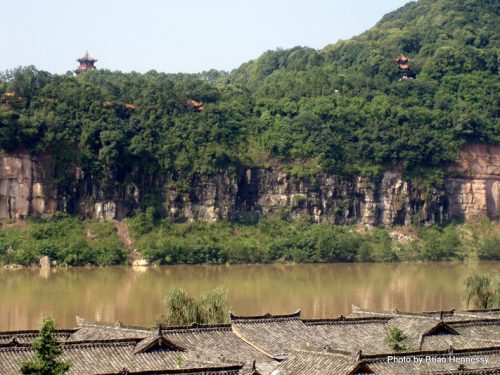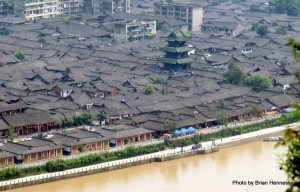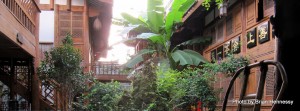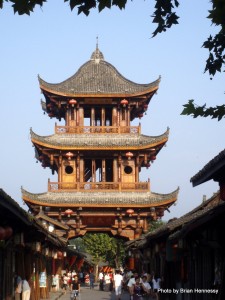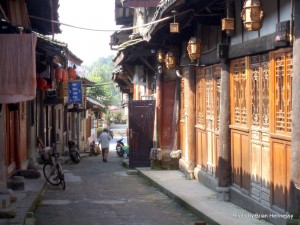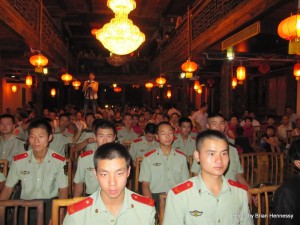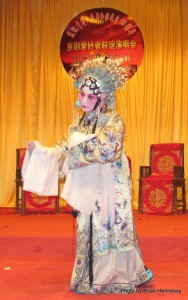Langzhong
Brian Hennessy. An Australian in China. 2009, 2010, 2011
This 2,300 year old city is the genuine article. Located in the northeast of Sichuan Province in southwest China, Langzhong is a living example of how civilised life could be in ancient China. Unfortunately, it can’t be included in any packaged tour requiring major airports or fast rail transport. It’s off the beaten track. Nevertheless, this is what protects this special place from the mobile masses. If you have time however, and you are travelling independently, you can get there by bus. It’s a five hour trip from the capital cities of Chengdu and Chongqing. Spend the travel time reading about the local history (click photos to enlarge).
Langzhong
_____________________________________________________________
This is the heartland of the ancient kingdom of Shu, a culturally and politically independent state led by Liu Bei and his brilliant Prime Minister Zhuge Liang during the famous Three Kingdoms period (AD 220-280). There was a lot of warfare during that time as the kingdoms of Wei, Wu, and Shu fought each other for control of China.
The tomb of General Zhang Fei is here, the third member of a brotherhood who dedicated themselves to the task of restoring the Han dynasty and unifying China. It is located just off Zhangfei Lu, the main artery running north-south through a town plan laid out according to the rules of geomancy during the Tang Dynasty (AD 618-907). Feng shui followers will love this place.
Langzhong was the capital of Sichuan Province for seventeen years during the Qing dynasty (AD 1644-1912), so by any measure this fascinating ancient town has earned its place in history.
I learned a little about feng shui and geomancy here. From Mr Zhou, the manager of the Tianyi Hostel and his staff at the in-house feng shui museam. An interesting diversion if you’re not serious about these things, geomancy heaven if you are. Nevertheless, this was a good base to learn about and explore Langzhong. So good in fact, that I returned for three more visits. Multiple visits are the only way to get to know a place that is worth getting to know. Otherwise you’re a tourist, not a traveller.
Outside the hostel, in a little open courtyard adjacent to a lane running down to the river, there’s a gathering place for local residents who have little to do. Curious about this foreigner who has appeared out of nowhere, I know that they are looking for source material for tomorrow’s conversations. Chinese people thrive on gossip.
That’s OK. I understand these things and introduce myself: “Dajia hao, wo jiao Bulaien” (Hello everyone, my name’s Brian). Then I respond to the usual questions such as: where do you come from, are you married, how many children do you have, how old are you, and how much do you earn? The standard repertoire. I am used to this type of questioning – having been well-trained by Chongqing taxi drivers – and can rattle off the responses like a native speaker. Well almost. It’s also a good idea to tell these good folk that you like their town: e.g., “Wo hen xihuan Langzhong” (I like Langzhong very much). If there is any remaining cultural ice to be broken, this will do it. The fact is, I enjoy meeting local people. It’s how I get a feel for a place.
When my visits to Lanzhong coincided with a weekend, I could expect to meet some guests from Chengdu. Both Mr Zhou and I benefited from this: he would gain face for his establishment by telling them that a Western friend had returned, and I would benefit from meeting some very nice people. For example; one weekend some classically trained performers of traditional Sichuan opera arrived. A lively bunch of artists who invited me to share an evening meal in the courtyard under the moon and the bougainvillea. What a night! Many toasts to international friendship with shots of baijiu spirits (Ganbei!) and impromptu performances of their art. You had to be there. It was wonderful.
One evening some locals invited me to attend a concert in a nearby community hall. The audience included soldiers from the local barracks, family groups, and anybody else who walked by and stuck their head in to see what was going on. I was escorted to my seat in the front row beside the other honoured guests who were certain to be Party members (they all look the same). Next minute, the MC had me up on stage, and a beautiful young hostess was introducing me to the audience. Then she invited me to sing! (I should have been ready for this surprise. The same thing happened to me in Xi’an two years ago).
All I can say is that I did my best with a few tortured verses of Waltzing Matilda (those that I could recall) and that the applause was polite if not enthusiastic. I was relieved to scuttle back to my seat beside the puffy-eyed, impassive faced representatives of the Peoples Republic of China (why weren’t they asked to sing?). All that free food and grog leaves its mark, folks. I’ve met more than a few Party members with bad livers.
The show of course was magnificent. Traditional dance, a set-piece period drama, some quick-fire humour, and a patriotic song from the soldiers. Oh, and an unintentionally hilarious B-grade performance in front of an irreverent audience from an aging actor with Beijing Opera pretensions.
I admired what the elders were trying to accomplish. China is changing so rapidly, that many ancient traditions are being left behind in its wake. In this town, these good folk are keeping culture alive.
Having said this, Langzhong is much more than Feng Shui, Geomancy, and the performing arts. It has a rich intellectual and spiritual history as well. For example; the first imperial examinations were held here. You can visit the Gongyuan Imperial Hall to see for yourself how serious the mandarins were about the selection process for the country’s future administrators. Anyone caught cheating was executed. True.
Luo Xiahong the astronomer and inventor of the first Chinese calendar lived here also. You can visit his observatory on the top of a mountain on the other side of the Jialing River. This river drains the wild Qinghai-Tibet Plateau in the north west of Sichuan, and flows across the basin before emptying into the Yangtze River at Chongqing. Its southerly course is interrupted however, by a protective circle of lush green mountains which redirect its waters around the Langzhong peninsular.
These natural defences – mountains and river – frustrated the attempted invasions by Shu’s enemies all those years ago. In particular, the campaigns led by General Cao Cao, the ambitious and brilliant military and political strategist from the northern kingdom of Wei. Zhang Fei was the local hero in those desperate times. Hence the temple.
Physical reminders of China’s rich spiritual heritage can also be seen on the opposite side of the river where Buddhist and Dao temples are concealed along the slopes of the encircling mountains. The red guards who rampaged across China during the Cultural Revolution must have missed these special places. Today, a ten minute taxi-ride will put you within walking distance of them. Very few people make the effort though. There’s no marketing, no money-making, and no crowds. In fact one old peasant lady, a jealous protector of these ancient relics, shut a door in my face – the door of a temple façade protecting a Buddha carved into the sandstone wall. The poor old thing probably thought that even in the twenty-first century, an inquisitive laowai (foreigner) was not to be trusted with China’s cultural secrets. Perhaps she remembers the thieving that went on in Dunhuang in Gansu Province all those years ago. Western archeologists removed priceless artifacts and carvings from cave walls and shipped them off to European museums.
In my opinion, these weathered reminders of China’s glorious past are more interesting than the more famous places that everybody knows about. For example, although the Great Wall is a genuine wonder of the world, you can see how it has been doctored in places. One look at the eastern end which terminates at the Yalu River along the China-North Korean border will convince you that parts of this magnificent structure have had radical surgery. The Temple of Heaven also. Its makeover looks too good to be true. The point is that some of these cultural icons have been renovated out of authenticity.
My preference is for the battered old relics hidden in semi-isolated villages, towns, and districts across the countryside of China that haven’t been discovered, treasured, and restored. Maybe that’s because the local people don’t know what they are sitting on. Or maybe they do, and that’s why they protect them. It is also possible that their rural isolation has inhibited them from appreciating the national value of their local cultural heritage.
A word about religious tolerance. Four religions coexisted here in peace, and as far as I can tell, they still do: There’s a normal quota of Buddhist and Daoist temples, plus a Catholic church, and a Moslem mosque. Although they may not be thriving, at least they are still standing. Someone takes care of them, and someone values what they represent. I’m guessing that a tolerant communal attitude towards all religions limited the excesses of the Cultural Revolution. Otherwise these places of worship would have been flattened.
An old Chinese style mosque for the resident Hui minority Moslem population looks OK though. These people are the descendants of Persian traders who came here via the Silk Road during the Tang dynasty and they continue to practice their foreign faith in this Chinese city today. As they do in Xi’an and other cities in the northwest of China. The Hui are well-integrated into Chinese society, so there is no overt cultural or racial tension between the two groups.
This unusual building represents a foreign religion that has been adapted to Chinese circumstances. A reminder of the glory days of the Tang Dynasty when the Emperors in nearby Xi’an encouraged the arts, traded with neighbours, and were tolerant of all religions. In those days, Xi’an was the most cosmopolitan city in the world. Langzhong is in good historical company.
Today this mosque with its Chinese roofline adorned with a Moslem crescent is locked away in a section of the town that seems to have more than the usual quota of narrow winding alleys and old clay and stone walls. White-capped Hui traders carry out their daily commerce along these crowded corridors. Keeping the faith and servicing community needs.
Generally speaking, if you turn any corner on any street, lane, or alley in Langzhong, you will see something worth photographing. From wooden towers (no nails) and their panoramic views of sweeping black-tile rooflines above neat square courtyards below; to the small clean dwellings that clutter a symmetrical town plan. Transport is via foot, electric scooters, and small engined service vehicles. Noisy two-stroke motorcycles are banned.
This ancient part of town is no architectural mausoleum. People still live and love and raise their families here. Old folk, young folk, shop-front traders, mobile tradesmen and sellers of vegetables, meat, and everything else that you might need are the beating cultural heart of this venerable old community.
A word about the local people. Compared to some other towns in China, Langzhong residents seem to be content with their lot. No matter how humble their dwelling, no matter how little they might earn. I’m sure that their ancestral link to this famous town helps. Although they may have one foot in the past and the other in the present, they are grounded personalities.
And they are pure. They haven’t learned how to rip money out of your tourist-pocket yet (give them time). There are no touts at the bus-station, and as far as I could tell, there wasn’t a karaoke bar or nite-club in sight (these entertainments are located out of sight on the edge of town). It’s just a local town where people do local things, and respond with genuine warmth to a Ni hao from this laowai from across the sea.
The schoolkids were curious and friendly; and the conversations I had with the street traders and old folk were about ordinary things. Nobody tried to sell me something I didn’t need, and nobody tried to steal my wallet! This is a safe place.
The tourists I saw here this summer were mainly Chinese families from somewhere else. Middle class folk who take pride in, and who are beginning to explore, their own country and its long and fascinating history. People who, just a few short years ago, would have been discouraged from leaving their home village. It is a gratifying sight. China on the move.
Culturally curious Western travellers will love this town. If you have a nose for living history and want to look behind the ‘face’ that China presents to the world, Langzhong would be a good place to explore. In my opinion, it’s a more interesting spot than either the Great Wall in Beijing or the Terracotta Warriors in Xi’an.

